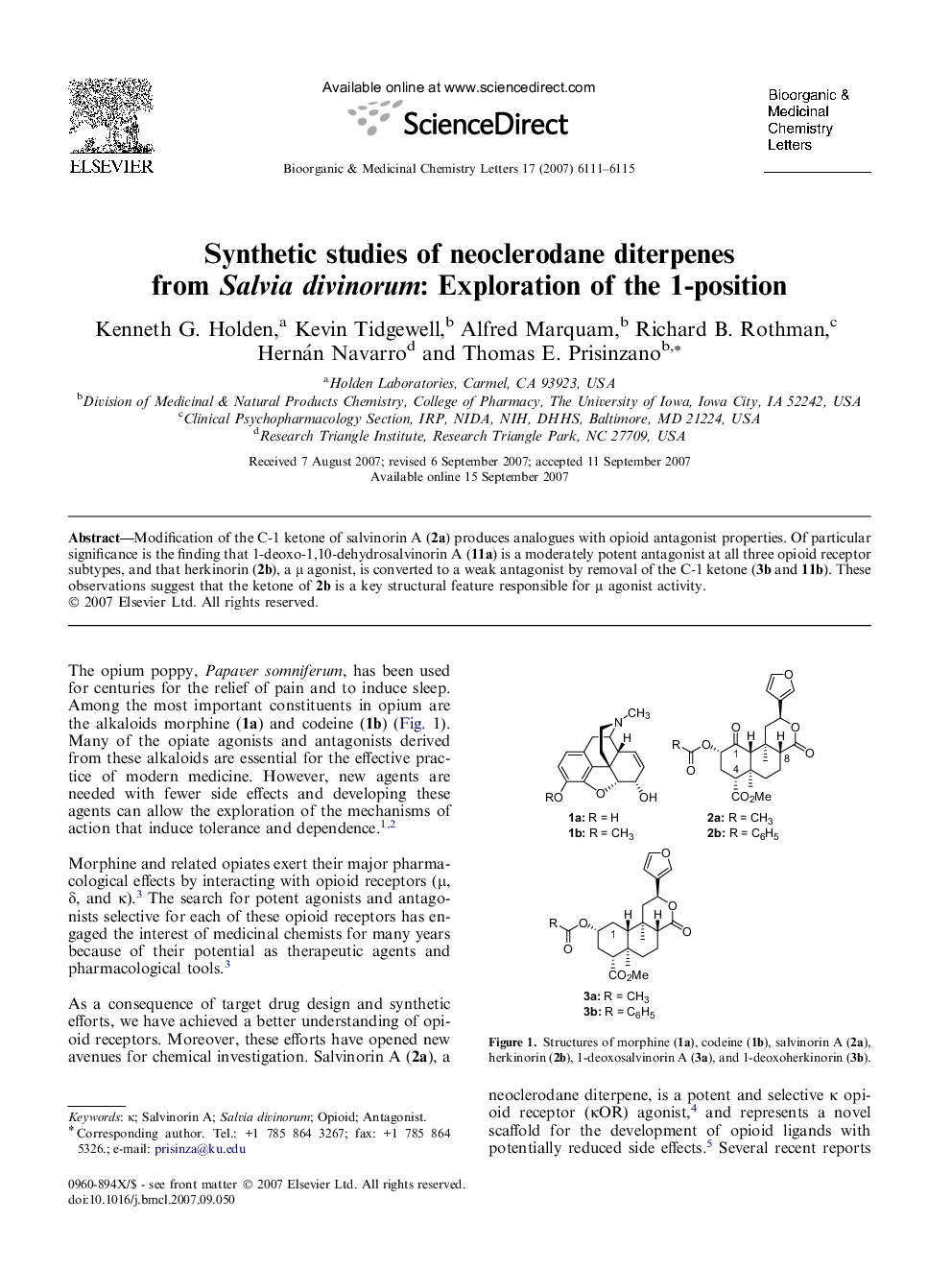| Article ID | Journal | Published Year | Pages | File Type |
|---|---|---|---|---|
| 1373206 | Bioorganic & Medicinal Chemistry Letters | 2007 | 5 Pages |
Abstract
Modification of the C-1 ketone of salvinorin A (2a) produces analogues with opioid antagonist properties. Of particular significance is the finding that 1-deoxo-1,10-dehydrosalvinorin A (11a) is a moderately potent antagonist at all three opioid receptor subtypes, and that herkinorin (2b), a μ agonist, is converted to a weak antagonist by removal of the C-1 ketone (3b and 11b). These observations suggest that the ketone of 2b is a key structural feature responsible for μ agonist activity.
Graphical abstractFigure optionsDownload full-size imageDownload as PowerPoint slide
Related Topics
Physical Sciences and Engineering
Chemistry
Organic Chemistry
Authors
Kenneth G. Holden, Kevin Tidgewell, Alfred Marquam, Richard B. Rothman, Hernán Navarro, Thomas E. Prisinzano,
